The Zastava M70 (Serbian Cyrillic: Застава М70) is a 7.62×39mm assault rifle. Developed in the Socialist Federal Republic of Yugoslavia by Zastava Arms during the 1960s, the M70 was an unlicensed derivative of the Soviet AK-47 (specifically the Type 3 variant).[5] Due to political differences between the Soviet Union and Yugoslavia at the time, namely the latter's refusal to join the Warsaw Pact, Zastava was unable to directly obtain the technical specifications for the AK and opted to reverse engineer the weapon type.[6] Although the M70 was functionally identical to the AK, it had unique in-built features that better enabled it to fire rifle grenades.[6] These included a thicker receiver, a new latch for the dust cover to ensure it wouldn't be jarred loose by a grenade discharge, and a folding grenade sight bracket over the rifle's gas block, which also shut off the gas system when raised.[6]
The M70 became the standard issue infantry weapon in the Yugoslav People's Army in 1970, complementing and later superseding the Zastava M59/66. The M70 was also used by Republika Srpska in the Bosnian War alongside the AK-74 and other weapons.[7] Both the original M70 design, as well as commercial variants of the weapon without select-fire capability, known as the Zastava PAP series, are still produced by Zastava for export.
History

Beginning in 1952, Yugoslavia's defence industry had been experimenting with new automatic rifle designs, mostly patterned after the German StG 44, an unknown quantity of which had been captured by Yugoslav Partisans during World War II.[8] In 1959, two Albanian soldiers defected to Yugoslavia with Soviet AK-47s, which were promptly passed on by the Yugoslav government to be inspected by Zastava engineers.[8] Zastava was able to make metal castings of the two sample AKs, but could not glean enough technical data to reproduce the weapons or their associated parts.[8] By the end of the year, however, the Yugoslav government had obtained more early pattern AKs from an unidentified Third World nation that was receiving Soviet military aid.[8] At this point, there were enough AKs in Zastava's possession for its engineers to study and effectively reverse engineer the weapon type.[8] Unlicensed production of an AK-47 derivative commenced in 1964.[9]
The first domestic Kalashnikov rifles submitted by Zastava for military field trials were designated M64 and incorporated a milled receiver based heavily on that of the AK Type 3 but with several cosmetic differences.[9] For example, while the right side of the receiver was almost indistinguishable from that of the AK-47, the left side of the receiver had a raised step.[9] The M64 had a threaded barrel which resembled that of the AK-47 but was slightly thicker and not chrome-lined like its Soviet counterpart.[9] It was also equipped with a ladder sight for launching rifle grenades, which was folded against the upper handguard when not in use.[9] The sight functioned as a gas shutoff to enable the safe launching of a grenade when locked into place.[9] This design would later be incorporated into Zastava's M59/66 derivative of the Soviet SKS carbine.[10] As the recoil from the rifle grenade could dislodge the standard AK dust cover, this was replaced with a new design that utilized a spring-loaded bolt.[9] The stock of the M64 was also fitted with a heavy rubber recoil pad to help absorb the recoil.[9] The M64 was fed from modified AK-pattern magazines and was manufactured with a device that left the bolt open after the last round in the magazine had been fired.[9] It also possessed longer handguards that were not interchangeable with the Soviet type.[9] The placement of the AK-47's rear sight was moved even further to the rear, giving the operator a longer sight radius.[9] Though performances during field trials were satisfactory, the Yugoslav People's Army did not adopt the M64 in large numbers.[11]
In 1970, the Yugoslav government approved the M64 for serial production as the AP M70 (Automatska Puška Model 1970, "Automatic Rifle Model 1970"), with a few alterations to the original design.[12] To reduce production costs, the M64's bolt hold open device was removed. Instead, Zastava manufactured proprietary magazines for the M70 which fulfilled the same function.[9] The magazines' follower plates had flat rear edges which held back the bolt after the last round was fired.[9] A derivative of the M70 with a folding stock was also produced, under the designation M70A.[9] The M70 became a standard infantry weapon in the Yugoslav People's Army that year.[13]
Shortly afterwards, Zastava ceased threading the barrels of M70s into their receivers and adopted the cheaper and easier method of pressing and pinning barrels into the receivers.[12] The M70s produced with pressed and pinned barrels, along with other detail improvements, were redesignated M70B, with the folding stock variant being redesignated M70 AB.[12]
By the mid 1970s, Zastava began manufacturing the M70 with a stamped rather than a milled receiver to reduce production costs.[9] This was known as the M70B1. Derivatives of the M70B1 with folding stocks were designated M70AB2.[9] Both the M70B1 and M70AB2 were fitted with night sights, which alternatively utilized tritium vials or were marked with luminescent paint, that could be raised or lowered as needed.[9] Small numbers of M70B1s and M70AB2s were manufactured with mounting brackets for optics, these were designated M70B1N and M70AB2N, respectively.[9]
The final variant of the M70 to be produced was the M70B2, which possessed a new stamped receiver thicker and heavier than those found on comparable stamped receiver Kalashnikov rifles such as the AKM.[9] The M70B2 and most later models of the M70AB2 were also manufactured with sturdier barrel trunnions resembling those on the RPK light machine gun.[9] The rifles now possessed distinct bulges on either side of their forward receivers, necessary to accommodate the larger RPK-pattern trunnions.[9] The addition of the larger trunnions and thicker receivers was seen as a necessary measure to strengthen the rifle design and make it more suitable for launching grenades.[12]
Features

The original M70 design was based on the early pattern Soviet AK-47 (specifically Type 3), which utilised a milled receiver. There are a number of cosmetic differences between the two receiver patterns, namely the smooth left side of the receiver, which lacks the machined section normally found on original Soviet Type 3 AKs and their derivatives.[9] The M64/M70 dust covers were secured into place by a unique locking recoil spring guide, which prevents it from being dislodged while firing rifle grenades.[9] Additionally, Zastava serial numbers were engraved just above the magazine well on milled receiver M64s and M70s rather than on the trunnion.[9] Even after Zastava began producing the M70 with a stamped receiver, many of the weapon's features more closely resembled those of the Type 3 AK rather than the stamped receiver AKM.[9]
Zastava began incorporating larger, RPK-pattern barrel trunnions in the M70 during the mid to late 1970s, which resulted in a distinctive bulge on the forward receiver beneath the rifle's bolt handle.[9] Each M70B1 was marked on the left above the bulged trunnion with the Zastava brandmark, model number, year of production, and a serial number.[9] There are three fire selector markings on the right side of the receiver: "U" ("Ukočeno", safety), "R" ("Rafalna", automatic fire), and "J" ("Jedinačna", semi-automatic fire).[9]
The M70 included an integral folding ladder sight and a detachable grenade launcher spigot for launching rifle grenades.[9] The sight is normally locked into a folded position atop the rifle's upper handguard.[9] Prior to firing a rifle grenade, the sight is raised and locked in the vertical position, which closes off the gas port in the barrel and prevents the M70's action from being cycled while a grenade is being launched.[9] The M70 was designed to fire the M60 rifle grenade, with either a high-explosive or shaped charge warhead.[9] The sight markings on the left side of the ladder sight are graduated for high-explosive or anti-personnel rounds, while those on the right are graduated for targeting armored vehicles and other hard targets.[9]
The M70 was issued with a late pattern AKM bayonet, copied from the original Soviet product, with a leather scabbard hanger.[9] It was also issued with a unique Yugoslavian canvas sling, which was secured to the rifle by a flat steel hook.[9] The hook design required a much broader sling swivel to be attached to the M70's gas block than was usual to other Kalashnikov rifles.[9]
Variants

- M70 – milled receiver, fixed stock
- M70A – milled receiver, underfolding stock
- M70A1 – milled receiver, underfolding stock, mount for night or optical sights
- M70B1 – stamped receiver, fixed stock
- M70AB2 – stamped receiver, underfolding stock
- M70B1N – stamped receiver, fixed stock, mount for night or optical sights
- M70AB2N – stamped receiver, underfolding stock, mount for night or optical sights
- M70AB3 – stamped receiver, underfolding stock, rifle grenade sight removed and replaced with a BGP 40 mm underslung grenade launcher
- M70B3 – stamped receiver, fixed stock, rifle grenade sight removed and replaced with a BGP 40 mm underslung grenade launcher
- M92 – carbine, the shorter variant of the M70AB2
- PAP M70 – semi-automatic variant intended for the civilian market
- Tabuk - Iraqi copy. Bore and chamber are not chrome plated.[14]
- Tabuk Carbine - Iraqi carbine variant with underfolding stock
- Tabuk Sniper Rifle – Iraqi long barrel stamped receiver and fixed stock variant
Users
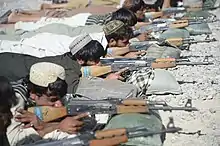
 Angola[15]
Angola[15] Burkina Faso: used by the Burkinabese contingent of the United Nations Multidimensional Integrated Stabilization Mission in Mali[16]
Burkina Faso: used by the Burkinabese contingent of the United Nations Multidimensional Integrated Stabilization Mission in Mali[16]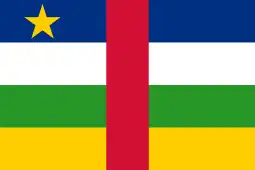 Central African Republic[17]
Central African Republic[17] Democratic Republic of Congo: used by rebel groups, such as CNDP and FDLR[18]
Democratic Republic of Congo: used by rebel groups, such as CNDP and FDLR[18]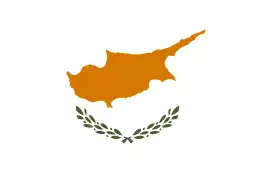 Cyprus[19]
Cyprus[19] Iran: Some captured from Iraq and re-issued during the Iran-Iraq War.[6]
Iran: Some captured from Iraq and re-issued during the Iran-Iraq War.[6] Iraq[14][20][1]
Iraq[14][20][1]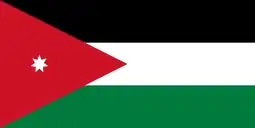 Jordan[20]
Jordan[20] Lebanon[20]
Lebanon[20]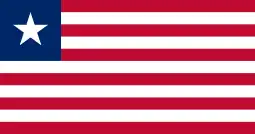 Liberia[21]
Liberia[21] Libya[22]
Libya[22] Mali: 1,000 rifles donated by Croatia in 2013[23]
Mali: 1,000 rifles donated by Croatia in 2013[23] North Macedonia[24]
North Macedonia[24] State of Palestine: Used by the PLO[25] and later by the Palestinian National Authority.[26][27]
State of Palestine: Used by the PLO[25] and later by the Palestinian National Authority.[26][27]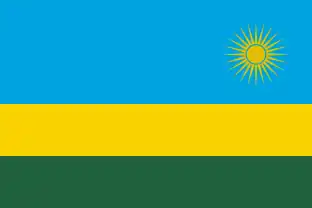 Rwanda[18]
Rwanda[18] Serbia[28]
Serbia[28] Slovenia[29]
Slovenia[29]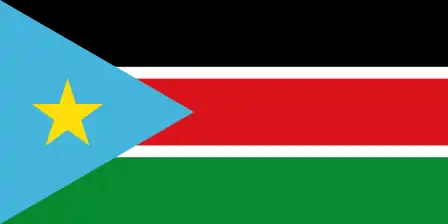 South Sudan[30]
South Sudan[30] Ukraine: Donated by Croatia in 2022.[2]
Ukraine: Donated by Croatia in 2022.[2] United Kingdom: Purchased a number of M70s for training of Ukrainian soldiers.[31]
United Kingdom: Purchased a number of M70s for training of Ukrainian soldiers.[31]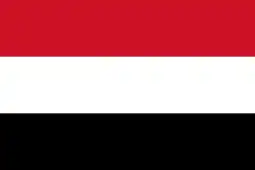 Yemen[30]
Yemen[30]
Former users
.svg.png.webp) Islamic Republic of Afghanistan: Received as military aid from US.[32]
Islamic Republic of Afghanistan: Received as military aid from US.[32] UNITA[33]
UNITA[33] Republika Srpska[7]
Republika Srpska[7]
See also
References
- 1 2 Iraq: Turning a blind eye: The arming of the Popular Mobilization Units (PDF) (Report). Amnesty International. January 5, 2017. p. 26. MDE 14/5386/2017. Archived (PDF) from the original on March 13, 2017. Retrieved October 26, 2018.
- 1 2 "Ukrainian forces using Serbian weapons". N1. March 15, 2022. Archived from the original on October 23, 2022. Retrieved July 9, 2022.
- ↑ @war_noir (September 25, 2023). "More photos of the captured weapons in #Zvečan (#Mitrovica)" (Tweet). Archived from the original on September 26, 2023 – via Twitter.
- ↑ "M70". Weapon Systems Net. Archived from the original on September 18, 2014. Retrieved November 16, 2014.
- 1 2 3 4 5 6 7 8 9 10 Ezell, Edward (1986). The AK47 Story: Evolution of the Kalashnikov Weapons. Harrisburg: Stackpole Books. p. 196. ISBN 978-0811722476.
- 1 2 3 4 McNab, Christopher (January 2022). Armies of the Iran-Iraq War 1980-1988. Oxford: Osprey Publishing. pp. 20, 50. ISBN 978-1472845573.
- 1 2 Wybranowski, Dariusz (2013), Chmielewski, Paweł; Szczesio, Sławomir Lucjan (eds.), "Armia Republiki Serbskiej w Bośni (1992–1995) – geneza, struktura i pierwsze lata istnienia", Bałkany Zachodnie — między przeszłością a przyszłością, Wydawnictwo Uniwersytetu Łódzkiego, doi:10.18778/7525-969-8.09, ISBN 978-83-7525-969-8, retrieved September 4, 2023
- 1 2 3 4 5 Chivers, C. J. (2011). The Gun. New York: Simon and Schuster. pp. 250–251. ISBN 978-0-7432-7173-8.
- 1 2 3 4 5 6 7 8 9 10 11 12 13 14 15 16 17 18 19 20 21 22 23 24 25 26 27 28 29 30 31 32 33 34 35 36 Brayley, Martin (June 1, 2013). Kalashnikov AK47 Series: The 7.62 x 39mm Assault Rifle in Detail. Marlborough: The Crowood Press. pp. 277–293. ISBN 978-1847974839.
- ↑ Steve Kehaya; Joe Poyer (1996). The SKS Carbine (CKC45g) (4th ed.). North Cape Publications, Inc. pp. 34–35, 118–119. ISBN 1-882391-14-4.
- ↑ Nurkić 2005, p. 71.
- 1 2 3 4 Nurkić 2005, p. 72.
- ↑ "History of Zastava Arms 1945–1970". Zastava Arms. 2008. Archived from the original on May 7, 2012. Retrieved November 16, 2014.
- 1 2 Rottman 2011, p. 49.
- ↑ "Zastava oružje najavila povratak na tržište Angole i Egipta" [Zastava Arms announces return to the market of Angola and Egypt]. eKapija (in Bosnian). Archived from the original on February 1, 2016. Retrieved January 26, 2016.
- ↑ Cherisey, Erwan de (July 2019). "El batallón de infantería "Badenya" de Burkina Faso en Mali - Noticias Defensa En abierto". Revista Defensa (in Spanish) (495–496).
- ↑ Berman, Eric G.; Lombard, Louisa N. (December 2008). The Central African Republic and Small Arms: A Regional Tinderbox (PDF). Small Arms Survey. pp. 82, 94. ISBN 978-2-8288-0103-8. Archived from the original (PDF) on January 7, 2017. Retrieved September 15, 2018.
- 1 2 Small Arms Survey (2015). "Waning Cohesion: The Rise and Fall of the FDLR–FOCA" (PDF). Small Arms Survey 2015: weapons and the world (PDF). Cambridge University Press. p. 201. Archived from the original (PDF) on January 28, 2018. Retrieved August 29, 2018.
- ↑ "Kipar prodaje Maliju Zastavine kalašnjikove" [Cyprus selling Mali Zastava Kalashnikovs]. Kurir (in Bosnian). February 1, 2013. Archived from the original on January 31, 2016. Retrieved January 26, 2016.
Kiparsko Ministarstvo odbrane ponudilo je 2.364 automatskih pušaka koje je proizvela kragujevačka "Zastava", afričkim snagama koje pomažu vlastima u Maliju u borbi protiv islamskih ekstremista. ("The Cypriot Ministry of Defence has offered 2,364 automatic rifles produced by the Kragujevac-based "Zastava", to the African forces to help the authorities in Mali to fight Islamic extremists.")
- 1 2 3 Republic of Serbia: Ministry of Economy and of Regional Development. Annual Report on the Transfers of Controlled Goods in 2008. p. 37. Archived from the original on December 21, 2014. Retrieved October 25, 2014 – via Stockholm International Peace Research Institute.
- ↑ Small Arms Survey (2009). "Revealing Provenance: Weapons Tracing during and after Conflict". Small Arms Survey 2009: Shadows of War. Cambridge University Press. pp. 108, 110. ISBN 978-0-521-88041-1. Archived from the original (PDF) on August 30, 2018. Retrieved September 7, 2018.
- ↑ Jenzen-Jones, N.R.; McCollum, Ian (April 2017). Small Arms Survey (ed.). Web Trafficking: Analysing the Online Trade of Small Arms and Light Weapons in Libya (PDF). Working Paper No. 26. p. 75. Archived from the original (PDF) on October 9, 2018. Retrieved August 30, 2018.
- ↑ Drazen. "Croatia delivers donated infantry weapons to Mali – Ministry of Defence of the Republic of Croatia". Archived from the original on December 24, 2014. Retrieved March 18, 2018.
- ↑ Krott, Rob (October 2003). "Macedonia's Weaponry: A New Nation Re-Arms and Fights". Small Arms Review. Vol. 7, no. 1. Archived from the original on March 30, 2019. Retrieved March 30, 2019.
- ↑ "Automat M70 AB2". London: National Army Museum. 2017. Archived from the original on October 26, 2017. Retrieved December 18, 2023.
- ↑ Liever, Dov (August 4, 2016). "Fatah, Hamas accuse each other of sabotaging elections". The Times of Israel. Jerusalem. Archived from the original on May 9, 2021. Retrieved December 18, 2023.
- ↑ Ben-Gedalyahu, Tzvi (December 4, 2013). "PA 'Counter Terror" Army and Al Aqsa Terrorists Armed to the Teeth". The Jewish Press. Brooklyn. Archived from the original on December 9, 2013. Retrieved December 18, 2023.
- ↑ Jones, Richard D., ed. (January 27, 2009). Jane's Infantry Weapons 2009/2010 (35th ed.). Jane's Information Group. ISBN 978-0-7106-2869-5.
- ↑ "Oropali SKB Banko v Ljubljani" [SKB bank in Ljubljana robbed]. RTV Slovenija (in Slovenian). October 12, 2015. Archived from the original on October 21, 2015. Retrieved October 12, 2015.
- 1 2 "Government Soldiers Leave Juba Before Rebel Leader's Return". Archived from the original on October 20, 2019.
- ↑ "Britain purchased Zastava M70 assault rifles for Ukrainian soldiers training". Archived from the original on September 23, 2022. Retrieved July 24, 2022.
- ↑ "Ask not from whom the AK-47s flow". The Economist. London. April 16, 2016. Archived from the original on December 13, 2018. Retrieved December 3, 2023.
- ↑ Cock, Jacklyn (1998). Rotberg, Robert; Mills, Gregory (eds.). War and Peace in Southern Africa: Crime, Drugs, Armies, Trade. Washington: Brookings Institution Press. p. 102. ISBN 0-8157-7585-7.
Further reading
- Nurkić, Fadil (2005). Oružje bosanskog otpora. Slovo.
- "Пешадијско наоружање: Аутоматска пушка 7,62 mm М70" [Infantry weapons: Automatic Rifle 7.62 mm M70]. Serbian Army. Archived from the original on March 25, 2016. Retrieved February 24, 2016.
- Rottman, Gordon (May 24, 2011). The AK-47: Kalashnikov-series assault rifles. Osprey Publishing. ISBN 978-1-84908-835-0.
External links
- "Assault Rifle M70B1". Zastava Arms. Archived from the original on March 25, 2016. Retrieved April 10, 2014.
- "Assault Rifle M70B3". Zastava Arms. Archived from the original on March 25, 2016. Retrieved May 18, 2015.
- "Assault Rifle M70AB2". Zastava Arms. Archived from the original on April 29, 2015. Retrieved May 18, 2015.
- "Assault Rifle M70AB3". Zastava Arms. Archived from the original on March 25, 2016. Retrieved May 18, 2015.
- "Submachine Gun M92". Zastava Arms. Archived from the original on March 24, 2016. Retrieved May 18, 2015.
- Zastava M70 at the Internet Movie Firearms Database
- "Zastava M70". ArmiMilitari.it. May 30, 2017.
